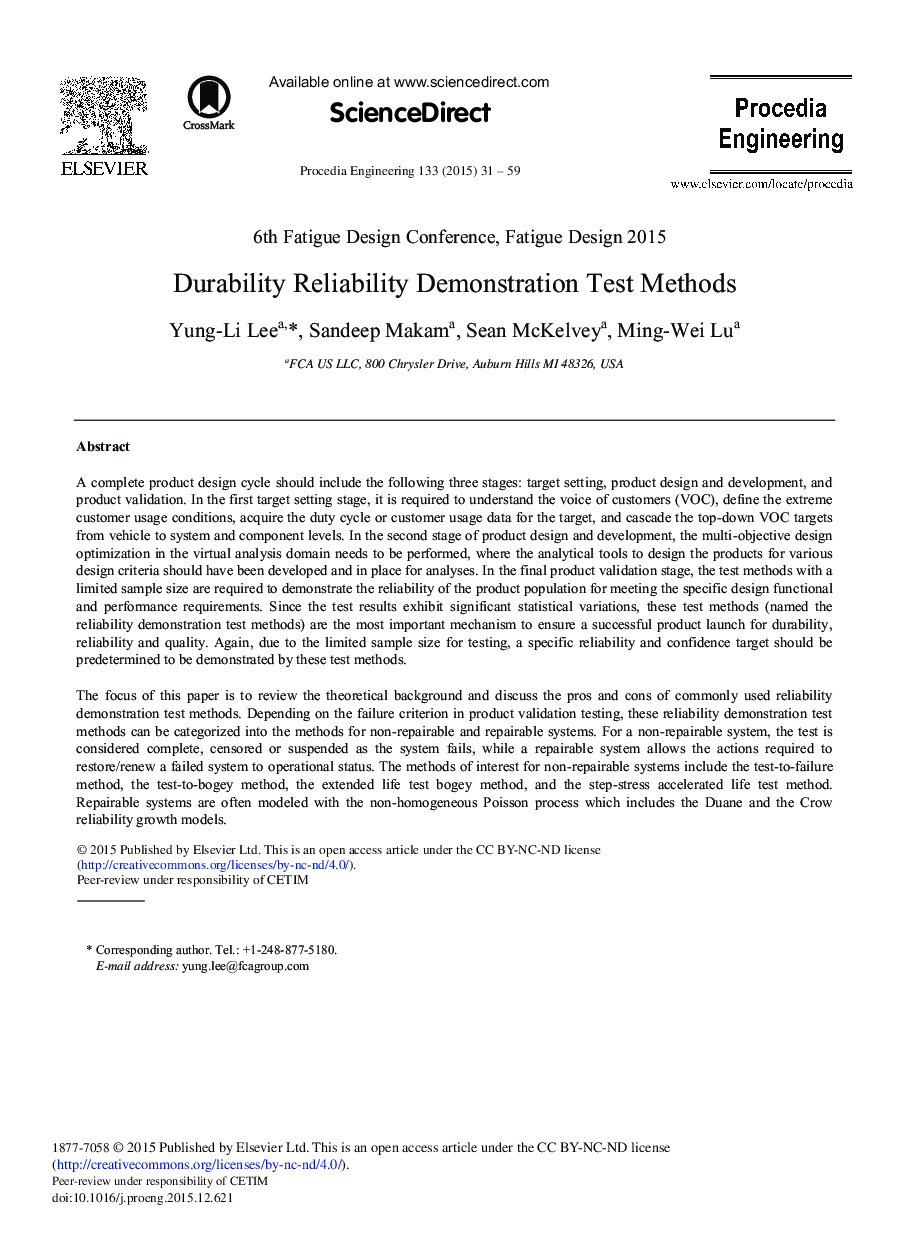| Article ID | Journal | Published Year | Pages | File Type |
|---|---|---|---|---|
| 853918 | Procedia Engineering | 2015 | 29 Pages |
A complete product design cycle should include the following three stages: target setting, product design and development, and product validation. In the first target setting stage, it is required to understand the voice of customers (VOC), define the extreme customer usage conditions, acquire the duty cycle or customer usage data for the target, and cascade the top-down VOC targets from vehicle to system and component levels. In the second stage of product design and development, the multi-objective design optimization in the virtual analysis domain needs to be performed, where the analytical tools to design the products for various design criteria should have been developed and in place for analyses. In the final product validation stage, the test methods with a limited sample size are required to demonstrate the reliability of the product population for meeting the specific design functional and performance requirements. Since the test results exhibit significant statistical variations, these test methods (named the reliability demonstration test methods) are the most important mechanism to ensure a successful product launch for durability, reliability and quality. Again, due to the limited sample size for testing, a specific reliability and confidence target should be predetermined to be demonstrated by these test methods.The focus of this paper is to review the theoretical background and discuss the pros and cons of commonly used reliability demonstration test methods. Depending on the failure criterion in product validation testing, these reliability demonstration test methods can be categorized into the methods for non-repairable and repairable systems. For a non-repairable system, the test is considered complete, censored or suspended as the system fails, while a repairable system allows the actions required to restore/renew a failed system to operational status. The methods of interest for non-repairable systems include the test-to-failure method, the test-to-bogey method, the extended life test bogey method, and the step-stress accelerated life test method. Repairable systems are often modeled with the non-homogeneous Poisson process which includes the Duane and the Crow reliability growth models.
